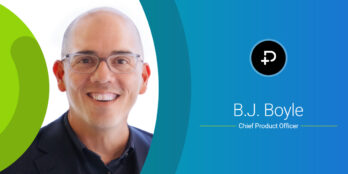
Top Questions About PDGM’s Impact on Billing and Finance Answered
 4 min
4 min
Note: This blog post was originally published on Relias.com
Brian Harris of BlackTree Healthcare Consulting presented a webinar with Relias, and received so many questions about PDGM’s impact on billing and finance, that he decided to respond to the top questions.
Read below to see the answers to the most frequently asked billing and finance questions regarding the Patient Driven Groupings Model.
Q: Is it anticipated that the majority of payers who currently pay HH by PPS, but are not straight Medicare, are going to switch to PDGM?
A: It is correct that the involvement of Medicare Advantage payors in PDGM will be payor specific. At this point, we have only seen a few payors across the country indicate that they plan on implementing the PDGM billing format on January 1, 2020. However, we still recommend that providers contact each of their contracted Medicare Advantage payors to obtain more information about the extent to which these payors plan on exploring PDGM.
Q: Must you use occurrence code 50 and put assessment date on EVERY final claim or only if there was a SCIC
A: Yes, occurrence code 50 must be included on all final claims along with the most recent assessment date. This date is used by CMS to link the final claim to the appropriate submitted OASIS and determine reimbursement.
Q: When questionable encounters are discussed, does this refer to when these codes are included with other codes or only on their own?
A: Questionable Encounters (QE) refer specifically to the primary diagnosis on the claim. Diagnosis codes that would qualify as a QE in the primary diagnosis spot can be listed as a subsequent diagnosis on the claim. The main concept here is that these diagnoses represent a symptom of the patient’s condition, but on their own they do not constitute home health eligibility.
Q: How will PDGM impact MSP?
A: The general concepts of Medicare Secondary Payer (MSP) billing will remain the same under PDGM. Providers will have to adapt the use of the existing MSP billing codes to the new PDGM claim format.
Q: How will CBSA be included in calculating the payments?
A: The CBSA will still be used to identify the wage index that will be applied when calculating reimbursement for claims. The wage index will be applied to the period base rate prior to the PDGM HIPPS calculations being performed.
Q: Could you explain why it will take three to four months for the cash flow to return to normal?
A: The projected cash flow delay is impacted by a few issues. First, it is anticipated that adapting to the new PDGM system will result in billing delays for providers due to the shortened timeframe for resolving prebilling issues and limitations in the EMR PDGM setup. Historically, Medicare has also shown delays in claims processing when making system updates of a much smaller magnitude than PDGM. It is not guaranteed that this will occur during the PDGM implementation, but providers should be aware of the potential delays. Finally, National Association for Home Health Care & Hospice (NAHC) performed an independent review using example cases for PDGM periods starting on various dates. This analysis found that in most cases agency cash flow would not return to pre-PDGM levels until approximately March 2020. The impact will be different for each provider, but our recommendation is that providers prepare for this potential risk.
Q: How is PDGM going to affect agencies who have “therapy only” patients?
A: The decision-making on discipline/visit utilization should not change under PDGM. The plan of care should still be designed to meet the service needs of the patient. If this dictates that the patient only needs therapy services, then the service delivery should not be different than it was under PPS. Providers will have to evaluate, however, the anticipated change in revenue for this service category under PDGM compared to the Prospective Payment System. We also recommend that providers evaluate their patient mix as a whole to determine if it is sustainable under PDGM, especially if this patient mix involves a high therapy need.
Q: Should you be doing test billing prior to 2019? If so, is Medicare giving all the new specs to all software vendors?
A: Medicare has not indicated that providers will be able to submit test claims prior to the implementation of PDGM in 2020. Providers should monitor communication from CMS and take advantage of any testing platform that is made available prior to PDGM implementation. If testing is not made available, providers at a minimum should confirm that claims with complete PDGM information can be generated from their EMR.
Connect with us to learn more about how PointClickCare can help you prepare for PDGM on January 1.
December 3, 2019






